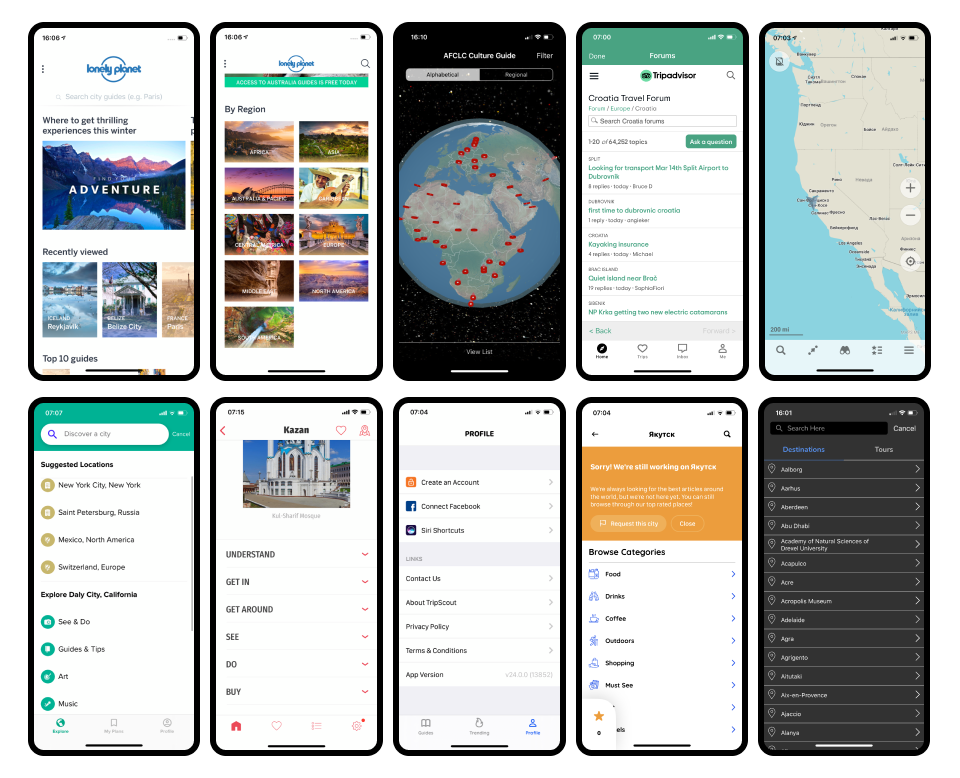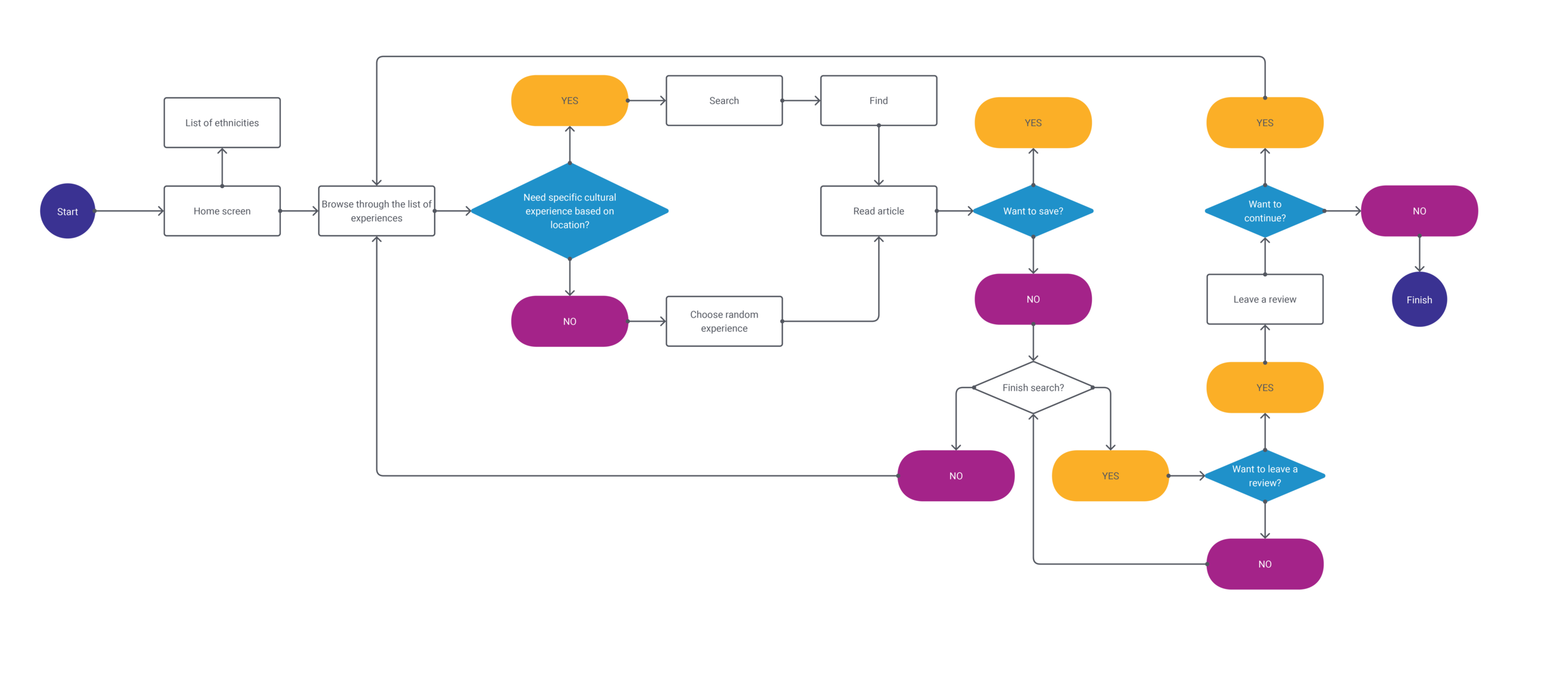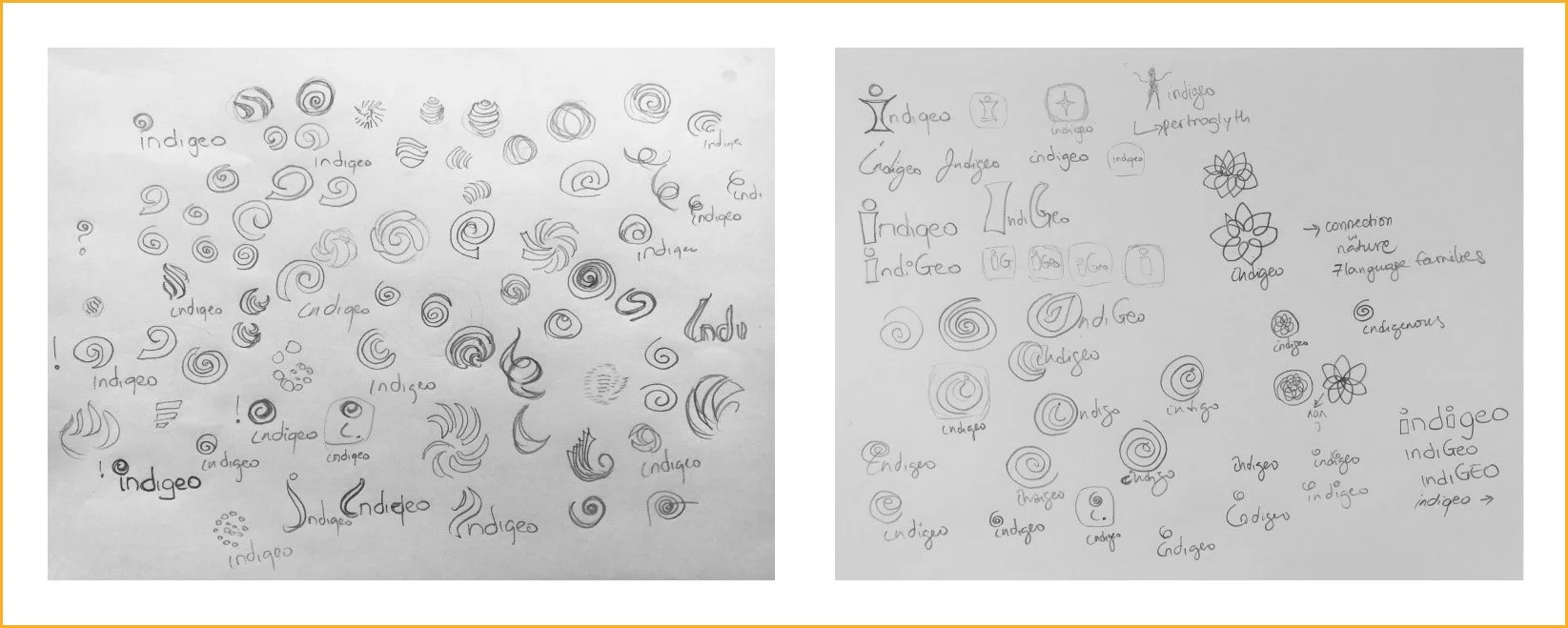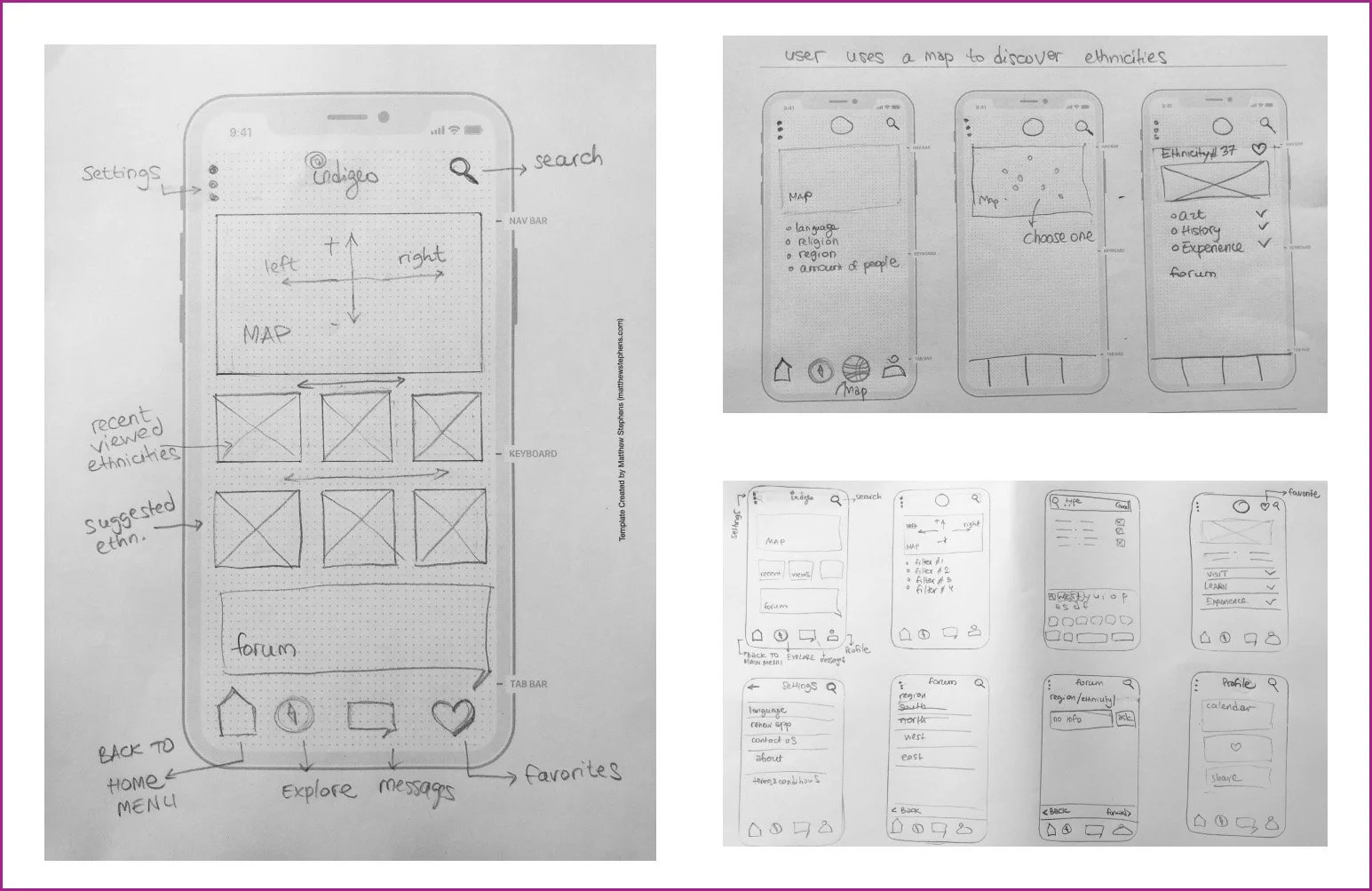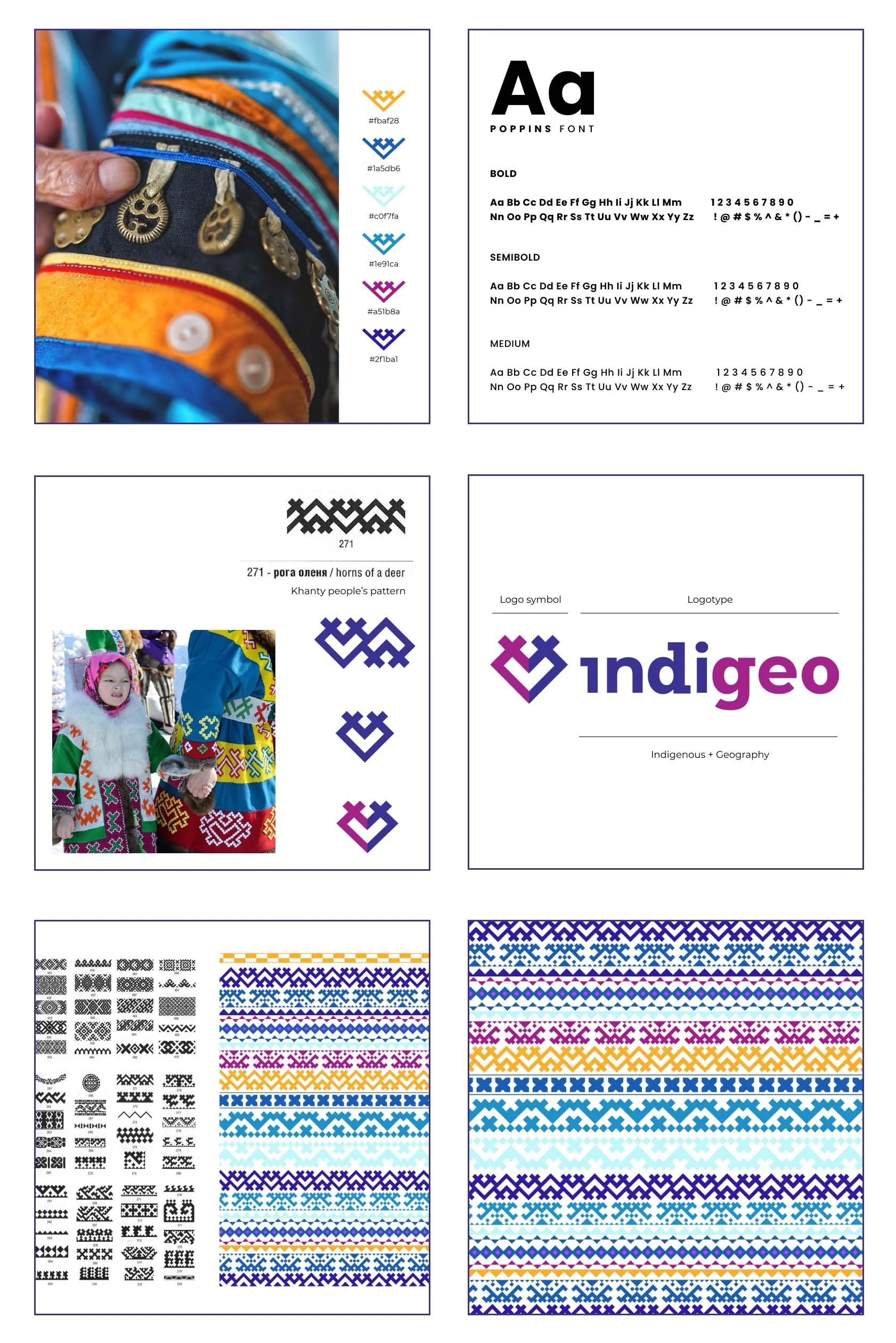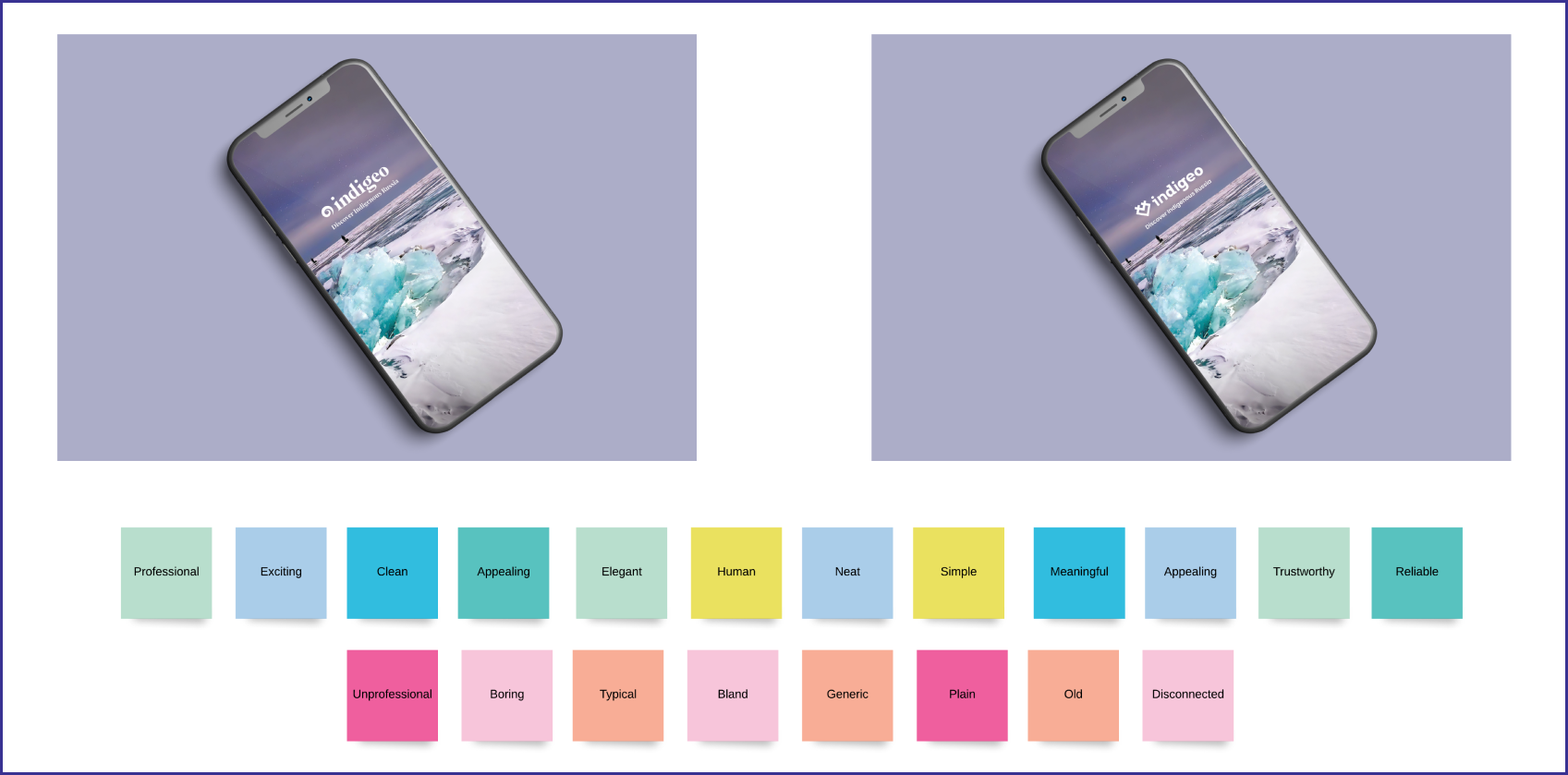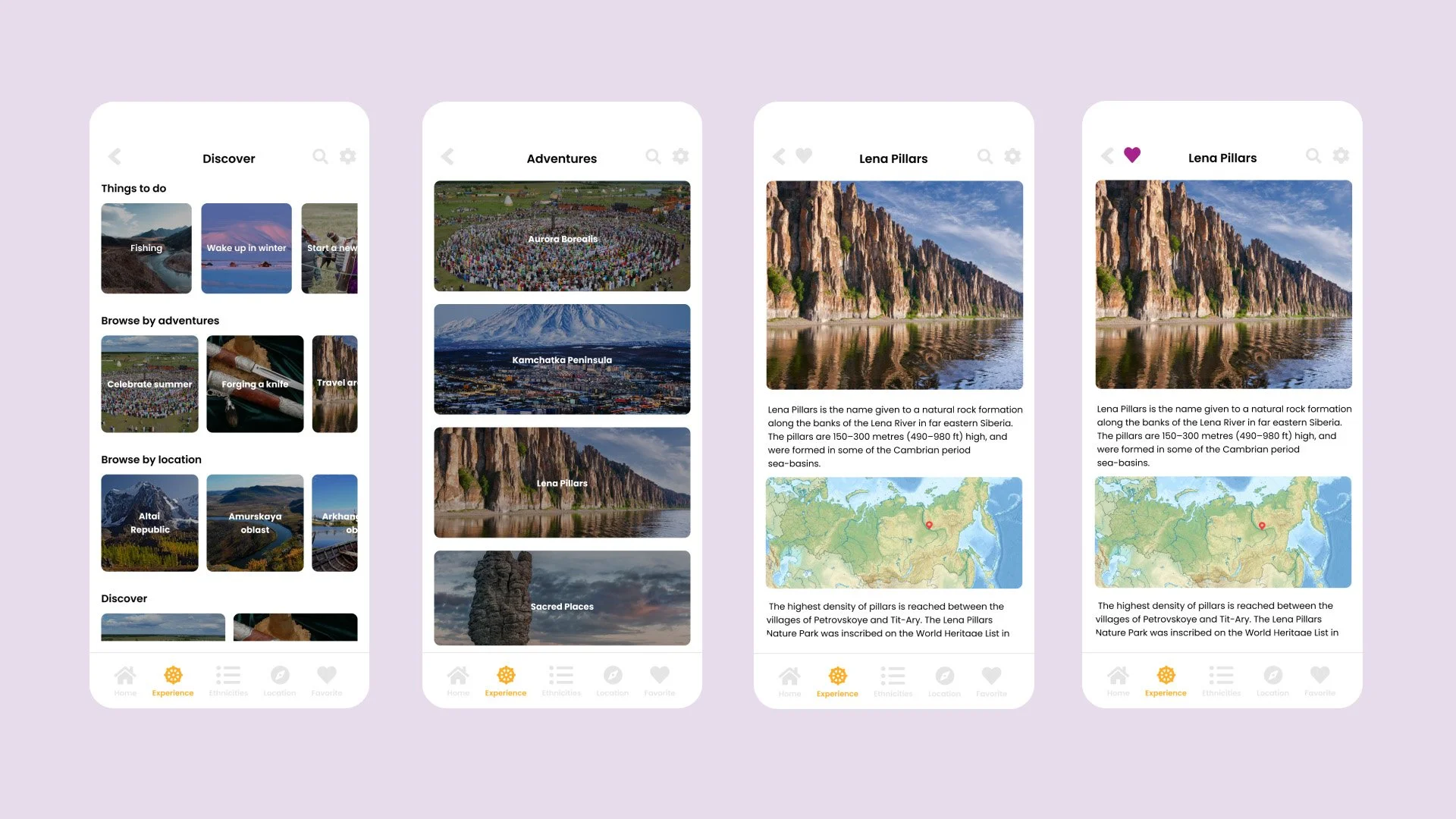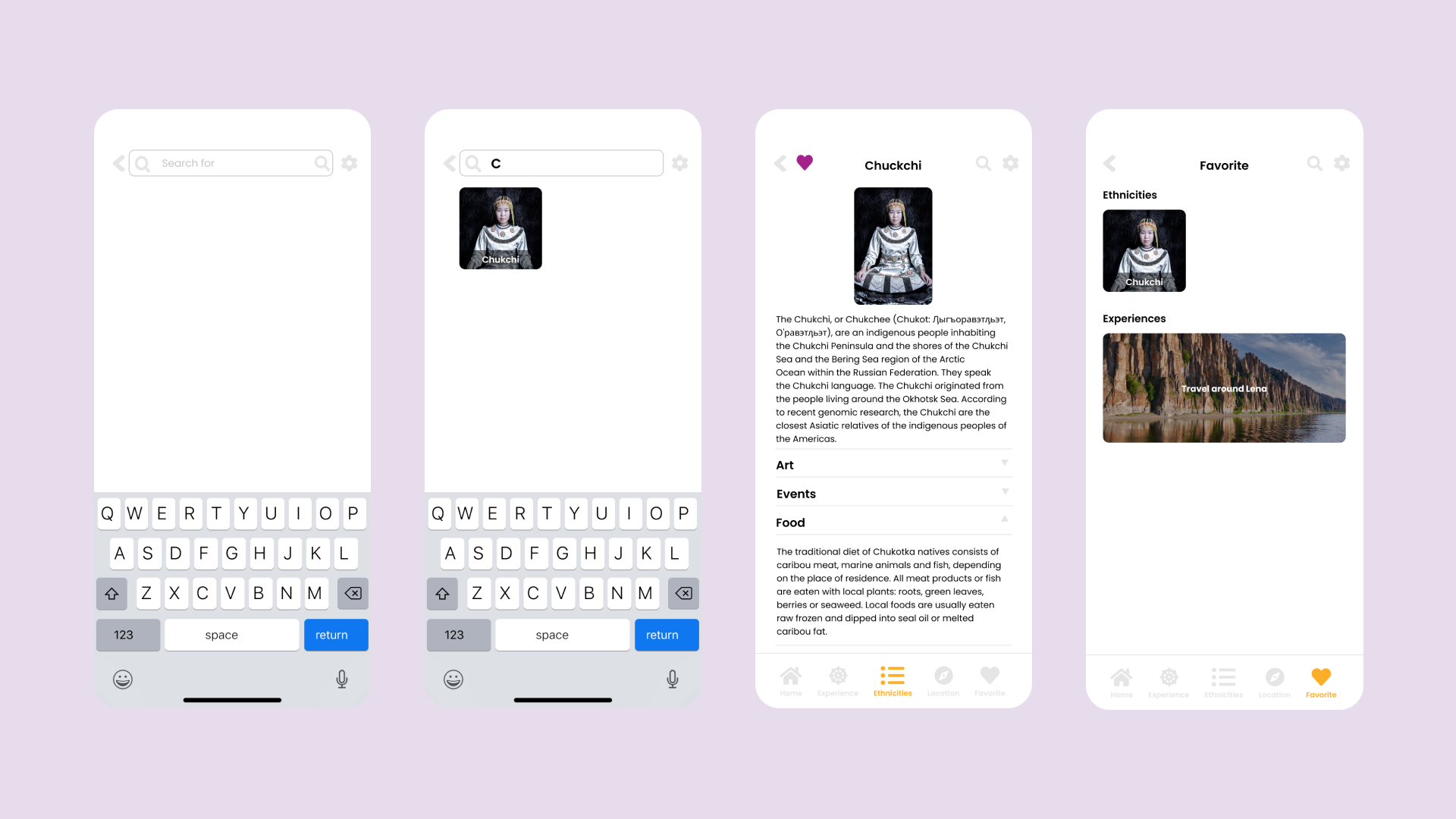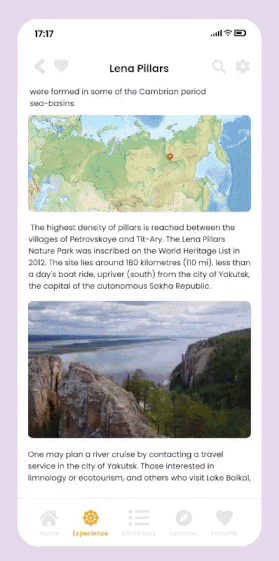UX/UI case study
Indigeo is an app that helps to discover and explore indigenous Russia

The problem
Russia has many Indigenous cultures that have been left out of the history textbooks and barely talked on the media. These cultures have been slowly assimilating with more dominant cultures and disappearing.
Solution
Create an app concept that educates about Indigenous people of Russia, their cultures, and their way of life. It brings these indigenous people to light not only for tourists but Russian people who don’t know a lot about them. The purpose of this app is to bring awareness and remember that our world has so many unique people that still keep and preserve their traditional way of life from hundreds of years ago.
Design thinking process
Discover
Research
User interviews
Target users
Knowledge seeker
Interested in ethnicities & cultures information - customs & traditions
All information in one app instead of different sources
Interesting and unknown facts
Ability to save information for the future
Skipping registration process
Adventure explorer
Potential tourist
Interested in new experiences, events, places to visit
Location-based app
The high value of other travelers’ experience
Sources: Tripadvisor, travel guides, tourist forums, friends Offline mode during traveling
Competitive analysis
A gap in existing apps
Traveling and cultural apps interface
4-5 elements on the bottom navigation bar
Name elements on the bottom navigation bar
Search on the top right bar
Information hierarchy & content features
Major patterns of usability
Ability to save information - favorite list
Define
Design drivers
User requirements
Bilingual
Be intuitive
User friendly
Available even offline
How
App in English and Russian languages
Based on already existing apps
Easy to use, be aesthetically pleasing
A light app that will allow using it offline as well
Personas
User interviews defined the necessity of two user groups - extraverts and introverts which were used for personas. Further development of the app concentrated on two options for users - meeting in person and online conversations.
Persona A - Adventure explorer
User flow - Persona A
Persona B - Knowledge seeker
User flow - Persona B
Open card sorting method
SFSU design students applied this method. Card sorting helped to understand users’ expectations and develop the information structure of the app. Participants were asked to organize topics into groups that make sense to them. After that, they were asked to name each group they created in a way that they feel accurately describes the content.
Closed card sorting method
This method was conducted with a help of potential users and Optimal Workshop. Participants were asked to sort topics from content within the app into pre-defined categories sorted from the open card sorting method. It helped to buildthe information architecture of the IndiGeo app.
Art
Architecture
Cinema
Crafts
Dance
Fashion
Music
Theater
History
Customs
Holidays
Traditions
Museums
Religion
Sports
Experience
Events
Markets
Nature
Sacred places
Sightseeing
Information architecture
Information architecture chart organized information in a clear and logical way to help users navigate through the app.
Ideate
User interviews and market analysis helped to define design drivers and borrow some feeds from existing apps. Initial wireframes were changed a lot after user testing. Mid-fidelity mockups were tested to prove the branding colors.
Ideation
Logo ideation
Wireframes
Style guide
The color palette was chosen from the indigenous people’s clothing - bright colors complement each other. The logo consists of a logo symbol (indigenous pattern) and logotype (combination of the words “Indigenous” and “Geography”). Poppins is one of the Geometric sans serif typefaces that have been a popular design tool for building websites. Each letterform is nearly monolinear, with optical corrections applied to stroke joints were necessary to maintain an even typographic color.

Desirability testing
The visual design of the app was tested through desirability testing with a help of Lucid.app. After checking a user interface, participants were given a list of positive and negative adjectives and asked to select three to five adjectives to describe them. Participants chose the words Appealing, Human, Exciting, Trustworthy, and Meaningful.
Test
A prototype was built in Figma. Images of the indigenous people used in the app were taken by ethnographic photographer Alexander Khimushin for his World in Faces project. Other pictures belong to Irina Porukova, Creative Commons, Pexels, Wikimedia Commons.
Ways to explore Indigenous Russia
Users have get to the home page when they start the app. It covers the latest news. After that, they can browse through the navigation bar to discover ethnicities or get information about the experience. Both users have equal opportunities to learn new things about Indigenous ethnicities and cultures.
Discover ethnicities
Ethnicities can be discovered based on their name and location. A user has an option to browse through recently opened ethnicities. The user can get general information and specific facts about chosen ethnicity, enlarge the image, and add it to the favorite list.
Get new experience
A user can find new places to travel. A new adventure can be added to the favorite list. Experience options give different options. A user can find new adventures, try new things to do, and discover experiences.
Search and add to favorites
A user can search ethnicities, any events, and locations. Any page in this app can be liked and added to the list of favorites.
Russian version
This app was meant for English and Russian speaking users. The language can be changed in the settings.
Deliver
A simple app that will update the homepage when internet is available, a user can browse through news, interesting facts and events. Experience and ethnicities sections work offline as a small info base in case there is no internet.
Lessons:
More unified grid gallery names
Make it simple or is too simple now?
Headings for each page - added them
More user testing - never enough
Font size - readability
As a next step Indigeo can include indigenous people from other countries.






